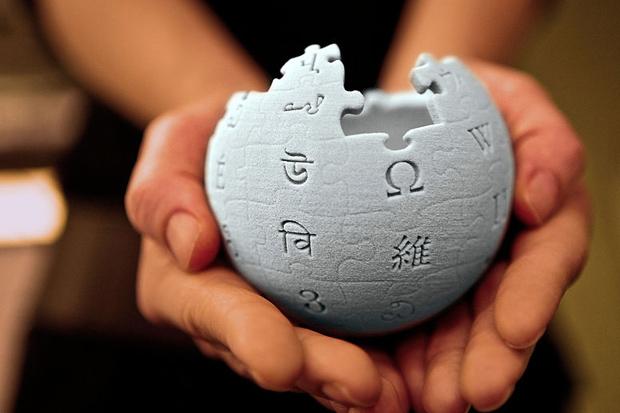 Wikipedia’s editors have always skewed male, but an illustrator named Santiago Ortiz recently made a chart visualizing how rarely female editors update the Wikipedia page compared to their male counterparts.
Wikipedia’s editors have always skewed male, but an illustrator named Santiago Ortiz recently made a chart visualizing how rarely female editors update the Wikipedia page compared to their male counterparts.
This newest digital representation of the gender disparity on Wikipedia drives home the larger problem of having primarily male-driven content – without a more even distribution, topics more popular with men get a disproportionate amount of attention compared to topics that tend to draw female interest. When 9 out of 10 Wikipedia editors are male, women-centric topics can be slighted, and the impartiality of the site is compromised. The inclusion of traditionally feminine topics has incited debate, like when editors tussled over whether an article on Kate Middleton’s wedding dress should be deleted.
Sue Gardner outlined some of the issues women have with Wikipedia in a 2011 blog post called “Nine Reasons Women Don’t Edit Wikipedia,” and they’re all still relevant problems. And Gardner should know – she’s the executive director of Wikimedia, the non-profit arm of Wikipedia. She used conversations with many different women as the basis of her post, transcribing the reasons women told her they stayed off the site. They ranged from a lack of free time compared to men, to a perception of Wikipedia’s culture as misogynistic, overly sexual, and conflict-based.
There are myriad reasons why women aren’t drawn to Wikipedia in the same way men are, but whatever their reasons, it’s damaging the quality of the site. New York Times columnist Amanda Filipacci recently pointed out what this imbalance is doing to the female novelists section of the website – she penned an op-ed highlighting how female writers can be ghettoized on the site.
But what can be done about this problem, and are any of the root causes fixable?
Lots of effort, little success (so far)
There are groups attempting to right this gender disparity, like the WikiWomen’s Collaborative, an offshoot of Wikimedia devoted to inspiring and encouraging women to participate on the website. “The WikiWomen’s Collaborative conducts outreach programs to attract women to Wikipedia, writes blog posts to celebrate the success of these outreach events, interviews successful WikiWomen and share their stories with the public,” says Netha Hussein, a volunteer with WikiWomen’s Collaborative.
And this includes a social media component, since they also use Facebook and Twitter to share content and conduct surveys. And they also up the ante during women’s history month: “WikiWomen’s Collaborative conducts edit-a-thons and workshops during women’s history month to involve more women in Wikipedia.”
Even more outreach on the horizon
The workshops during women’s history month (which is in March) are one of the cornerstone projects the WikiWomen’s Collaborative works on, but it’s just one of many continued projects in their attempt to boost female engagement. “The most important project as of now is the evaluation of the work done during the women’s history month,” says Hussein. “We are in the process of measuring the success of the various activities we conducted during March. I am involved in writing reports of the Indian events that happened during Women’s History Month. Some of us are actively engaged in promoting our goals at Wikimania, the annual conference of Wikimedians by presenting papers about gender gap and conducting surveys among the attendees.”
So once they figure out whether their efforts during women’s history month yielded success, they may know how to change their campaigns in the future to become more effective. If not, charts like Ortiz’s will continue to showcase the problem with Wikipedia.
However, don’t despair – there’s already proof that pointing out the problem will help alleviate it, at least a little bit. The issue Filipacci had with the way American novelists were sorted on Wikipedia – with people like Harper Lee stuck in the “American Women Novelists” section instead of appearing on the main page – has already been corrected. If people keep calling attention to the problem, it may be the most effective way to both draw some more female editors and make male editors more aware of their bias.


